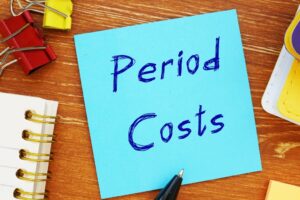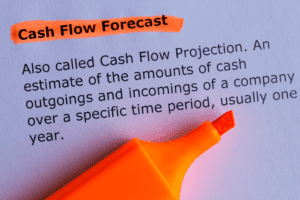
Direct labor encompasses the wages paid to employees who directly work on producing the goods or providing the services. Manufacturing overhead includes indirect costs like rent, utilities, and depreciation of machinery. When the product is sold, these costs are transferred from inventory account to cost of goods sold account and appear as such on the income statement of the relevant period. For example, John & Muller company manufactures 500 units of product X in year 2022.
Administrative expenses
As the name Bookkeeping for Etsy Sellers suggests, period costs are those costs which are incurred due to the passage of time. They don’t form part of the cost of inventory and thus are expensed to the profit and loss account as and when they are incurred by the entity. Such a treatment of period costs is in accordance with the accrual concept of financial accounting. Indirect labor consists of the cost of labor that cannot, or will not for practical reasons, be traced to the products being manufactured. The key difference between product cost and period cost is that product concurs when a company produces any products.
Calculating period costs
As the name suggests, product costs are derived from producing major types of products by the business. If there is no production of any goods, the business will incur no product cost. To quickly identify if a cost is a period cost or product cost, ask the question, “Is the cost directly or indirectly related to the production of products? Direct labor includes wages and salaries for employees directly involved in production, such as machinery operators or assembly workers. Labor union agreements and overtime regulations, like those under the Fair Labor Standards Act (FLSA) in the United States, can impact these costs.
- For example, the salary of a chief financial officer or the upkeep of corporate headquarters falls under this category.
- From an internal perspective within service-based industries, understanding cost flow is crucial for effective cost management and budgeting.
- They occur consistently over a specific time period, like a month or a year, and are incurred regardless of how much or how little the business produces during that time.
- Therefore, the person calculating the production costs must decide if these charges have already been taken into account or if they must be included in the total production cost estimate.
- These costs are integral to understanding the financial landscape of a company and require a detailed examination to appreciate their role in accounting and management.
Is Labor a Period Cost or a Product Cost?

These expenses include items such as selling and administrative expenses, rent, utilities, salaries, advertising, and depreciation on non-production assets. By separating these costs from product costs, businesses can accurately determine their net income for a given period and assess their profitability. Period costs include selling expenses and administrative expenses that are unrelated to the production process in a manufacturing business. Selling expenses are incurred to market products and deliver them to customers. Administrative expenses are required to provide support services not directly related to manufacturing or selling activities.

Budgeting and Forecasting with Period Costs
- The product costs are sometime named as inventoriable costs because they are initially assigned to inventory and expensed only when the inventory is sold and revenue flows into the business.
- Under different costing system, product cost is also different, as in absorption costing both fixed cost and variable cost are considered as Product Cost.
- Period costs are like the backstage crew ensuring the business show runs smoothly.
- These include salaries for research staff, experimental materials, and patent application fees.
- Forecasting, on the other hand, involves projecting future period costs based on historical data, economic trends, and anticipated changes in the business environment.
Understanding these types of period costs is important for managers as they plan and evaluate the company’s activities and performance. Understanding the distinction between period costs and product costs is vital for effective cost management, financial reporting, and strategic decision-making. While product costs focus on expenses tied directly to production, period costs encompass all other expenses incurred during an accounting period. Businesses must classify and calculate these costs accurately to ensure compliance, maintain profitability, and support operational efficiency. Product costs are recorded as inventory on the balance what are period costs sheet until the products are sold.

The wages paid to a construction worker, a pizza delivery driver, and an assembler in an electronics company are examples of direct labor. Product costs (also known as inventoriable costs) are those costs that are incurred to acquire, manufacture or construct a product. In manufacturing companies, theses costs usually consist of direct materials, direct labor, and manufacturing overhead cost. A direct cost is a cost that can be directly tied or traced to a specific unit, department or process. Examples of a direct cost include direct bookkeeping materials, direct labor, sales salaries to the sales department, accounting dept salaries to the accounting department, etc. In the intricate world of accounting and management, period costs stand as a critical concept that influences financial reporting and strategic decision-making.
Out of these 500 units manufactured, the company sells only 300 units during the year 2022 and 200 unsold units remain in ending inventory. The direct materials, direct labor and manufacturing overhead costs incurred to manufacture these 500 units would be initially recorded as inventory (i.e., an asset). The cost of 300 units would be transferred to cost of goods sold during the year 2022 which would appear on the income statement of 2022. The remaining inventory of 200 units would not be transferred to cost of good sold in 2022 but would be listed as current asset in the company’s year-end balance sheet. These unsold units would continue to be treated as asset until they are sold in a following year and their cost transferred from inventory account to cost of goods sold account. From an accounting standpoint, period costs are typically classified as operating expenses on the income statement.
If no, and it is paid to people that are working at the plant doing other things – it is a product cost, manufacturing overhead. There are still some product costs that don’t rise or fall with the level of production such as the cost of renting the building that houses the production process. On the other hand, period costs will always appear on the income statement.
